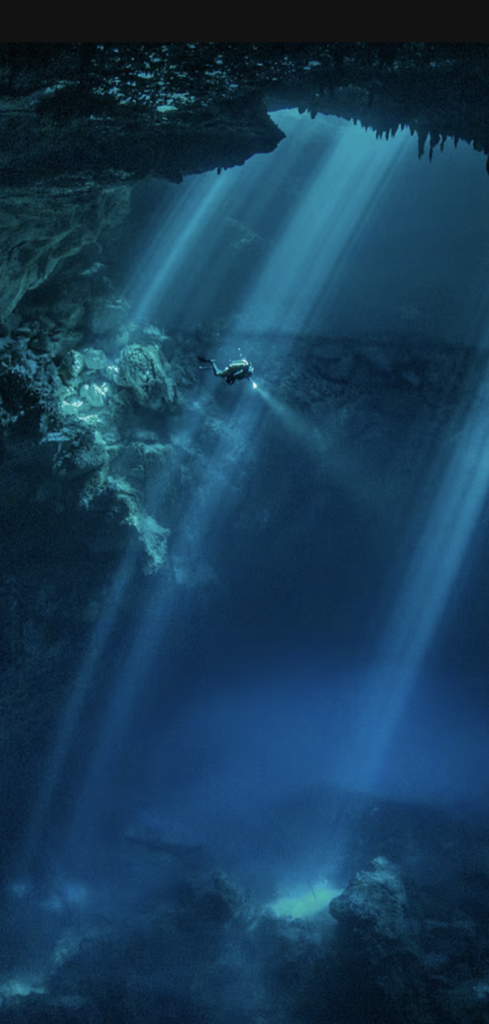Doomscrollers almost certainly noticed the recent articles in both the New York Times and the Wall Street Journal describing recent scientific work with connections to Mayan human sacrifice.
Among the various unsavory techniques that the Mayans applied in the service of appeasement of the gods, unfortunates were thrown into the cenotes, the flooded limestone sinkholes that puncture the limestone karst topography of the Yucatán. These are portals — as a manner of speaking — to the subterranean geophysical realms.

Image source.

Remarkably, the Yucatecan cenotes cluster in at least two arcs that trace the rings of the Chicxulub crater. The exact geological cause of this clustering remains imperfectly understood. The faulted deep-Earth structures imparted by the impact evidently still influence groundwater flows in a manner which encouraged the geologically recent formation of the solution caverns that give rise to the cenotes. This oblique connection to the ancient catastrophe is analogous, perhaps, to the myriad evolutionary consequences of the K-T event that still ripple through the biosphere. The vast and sweeping narrative of destruction and rebirth seems a fit, somehow, with the sensibilities inherent in the Mayan cosmogony.
The highest-order cycle of the mesoamerican Long Count is the alautun, which comprises a staggering 23,040,000,000 days. Accounting for the fact that Earth’s rotation has been tidally despinning at a rate of ~2.4 milliseconds per century, the alautun projects 62 million years into the past, a span that seems somehow satisfyingly proximate to the 66.043 million years since the impact.
